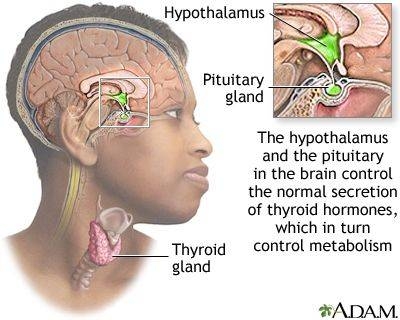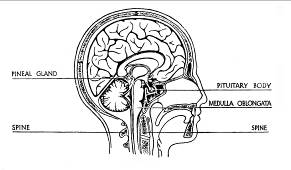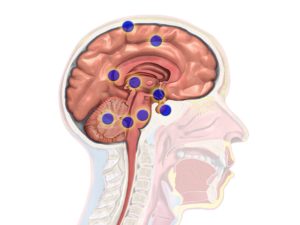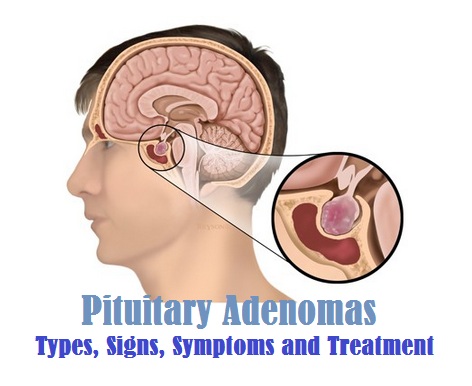What is Pituitary Adenomas?
Table of Contents
Pituitary Adenomas is a type of pituitary tumour. A tumour of this kind is a growth of abnormal cells in tissues of the pituitary gland. Pituitary tumours are formed on the pituitary gland also known as the master endocrine gland as it makes hormones that affect the way other parts of the body may function. It also controls hormones made by different glands in the body.
About the Pituitary Gland

This is a small gland the size of a bean that is located right below the hypothalamus. This is a structure located at the brain’s base, by a thread-like stalk that comprises blood vessels and nerves. This controls hormones in the body that regulate everything from growth to metabolism and stress response as well as functions of sex organs.
A pituitary tumour is a growth of cells in an abnormal way within the pituitary gland. While most pituitary adenomas are being, some can be invasive. Others may grow slowly and not spread to remaining body parts. In either case, they cause secretion of too many or too fewer hormones which lead to problems.
Functioning tumours cause a wide variety of symptoms depending upon the hormone affected. Tumours can also be non-functioning and cause growth-related symptoms. The pituitary gland is a master gland of the endocrine system and it controls growth metabolism, reproduction and even sexual functioning.
Types of Pituitary Tumours

Pituitary gland can cause abnormal growths or tumours and cysts or fluid- filled collections. These pituitary abnormalities are common. One in five patients has been estimated to have these. The third most common type of brain tumour is the pituitary tumour. Tumours and cysts in the pituitary gland are rarely cancerous but they can cause problems like:
- Putting pressure on surrounding structures
- Causing pituitary hormone abnormalities
Symptoms vary from one person to another and depend on the kind of tumour as well as the degree to which it is associated with hormonal abnormality. Patients may complain of headaches and if the tumour is large, it can even put pressure on the nerves of the eye and cause loss of peripheral vision.
Pituitary tumours can also lead to too little or too much pituitary hormone produced and symptoms vary. Weakness and fatigue are issues associated with pituitary problems. When the symptoms commence will be hard to locate as pituitary tumours grow extremely slowly. Pituitary tumours are diagnosed with MRI to assess:
- Structure
- Size
Vision testing and hormonal lab testing can also be used to assess pituitary functioning. A holistic healthcare approach is required for treatment involving neurosurgeons, endocrinologists and ophthalmologists.
Basic Types of Pituitary Adenomas
Benign pituitary adenomas: Tumours of this kind are not cancerous. These tumours grow extremely slowly and do not reach from the pituitary gland to other body parts.
Invasive pituitary adenomas: These are benign tumours that spread to the skull bones or sinus cavity just under the pituitary gland
Pituitary carcinoma: These are tumours that are malignant and associated with cancer. These tumours spread to other parts of the central nervous system or outside of it. The CNS comprises brain and spinal cord. Spread to other parts of the body is known as metastasis.
Pituitary tumours can be functioning or non-functioning in that they may or may not make hormones. Extra hormones produced by pituitary tumours are associated with certain signs and symptoms.
Apart from adenomas, other types of tumours include:
- Craniopharyngiomas
- Rathke’s cleft cysts
Hormones produced by functioning pituitary tumours include:
- Prolactin
- Adrenocorticotropic hormone
- Growth hormone
- TSH
- Luteinizing hormone
- Follicle stimulating hormone
- Hormones responsible for menstruation and sperm production
- Specific genetic conditions increase chances of developing this tumour.
The risk of getting a disease increases the likelihood of contracting it.
Risk factors for pituitary adenomas include:
- MEN 1 or Multiple Endocrine Neoplasia type 1
- Carney complex
- Isolated familial acromegaly
- Signs of a pituitary tumour including problem with vision and physical changes
Symptoms can be the result of the growth of the tumour or the hormones it makes. Certain adenomas may not cause symptoms.
Signs and Symptoms
Signs and symptoms include:
- Headache
- Loss of vision and body hair
- Less frequent/no menstruation in women
- Loss of facial hair and growth of breast tissue and impotence in men
- Lower sex drives in men and women
- Slowed development in teenagers and children
Sometimes, a pituitary tumour may press on or damage parts of the pituitary gland, causing it to stop making one or more hormones. Too little of a certain hormone will affect the work of the gland or organ that the hormone controls. The following symptoms may occur due to too much prolactin
- Headache.
- Some loss of vision.
- Loss of body hair.
- Slowed development in youngsters
- Lack of sex drive and impotence in adults
Too much ACTH leads to:
- Headaches and loss of vision
- Weight gain in face and neck as well as trunk of body and thin arms and legs
- Thin skin with purple, pink stretch marks
- Easy bruising
- Growth of fine hairs on face, arms or upper back
- Brittle bones
- Anxiety, depression and irritability
Too much growth hormone can lead to:
- Joint pain
- Sweating
- Snoring or sleep apnea
- Dysmorphophobia
- Loss of vision
- Heachache
- Acromegaly- growth of bones in face, hands and feet
Too much TSH may cause:
- Shakiness
- Trouble sleeping
- Sweating
- Frequent bowel movements
- Weight loss
Other symptoms of pituitary adenomas include dizziness, confusion and runny nose.
Tests For Detecting Pituitary Adenomas
- Physical exam and history
- Eye exam
- Visual field exam
- Neurological exam
- MRI
- CAT scan
- Blood test
- Blood chemistry study
- Twenty-four-hour urine test
- High dose DST test
- Low Dose DST
- Venous sampling for pituitary tumours
- Biopsy
- Immunohistochemistry study
- Immunocytochemistry study
- Light and electron microscopy
- Certain factors affect prognosis and treatment:
Size of tumour
- Type of tumour
- Non-functioning or functioning tumour
- Tumour is causing vision problems or not
- Whether tumour has spread to other parts of the body
- If the tumour has just been diagnosed or come back
Types of Treatment

Different types of treatment are available for persons with pituitary tumours, some being standard while others are in the clinical trial stage.
Surgery
This is a standard treatment. Many pituitary tumours can be removed using the following operations:
- Transsphenoidal surgery
- Craniotomy:
While the former may involve curettes, craniotomy ( as the name suggests) involves the cranial part of the body i.e. the brain.
Radiation Therapy
This is a cancer treatment using high energy x-rays or other types of radiation to prevent cancer cells from growing and destroy them. External radiation therapy involves a machine outside the body to send radiation towards the cancerous growth.
Internal radiation uses needles or wires or catheters with radioactive substances played near the cancerous growth, and this type of treatment is used for managing pituitary carcinomas. Radiosurgery may also be tried.
Drugs
Medication is given to stop a functioning pituitary tumour from the generation of too much hormone.
Chemotherapy
This is used in palliative care for carcinomas to increase resistance to paint and relieve symptoms.
Apart from these standard treatments, clinical trials are on for new treatments as well.
Conclusion
Pituitary tumour or adenomas are generally benign and at worst, invasive. What makes a massive difference is that pituitary tumours can also become cancerous or malignant in which case surgery and treatment are required on a priority basis.
Even benign tumours can create such a series of symptoms that management and treatment must become essential.

